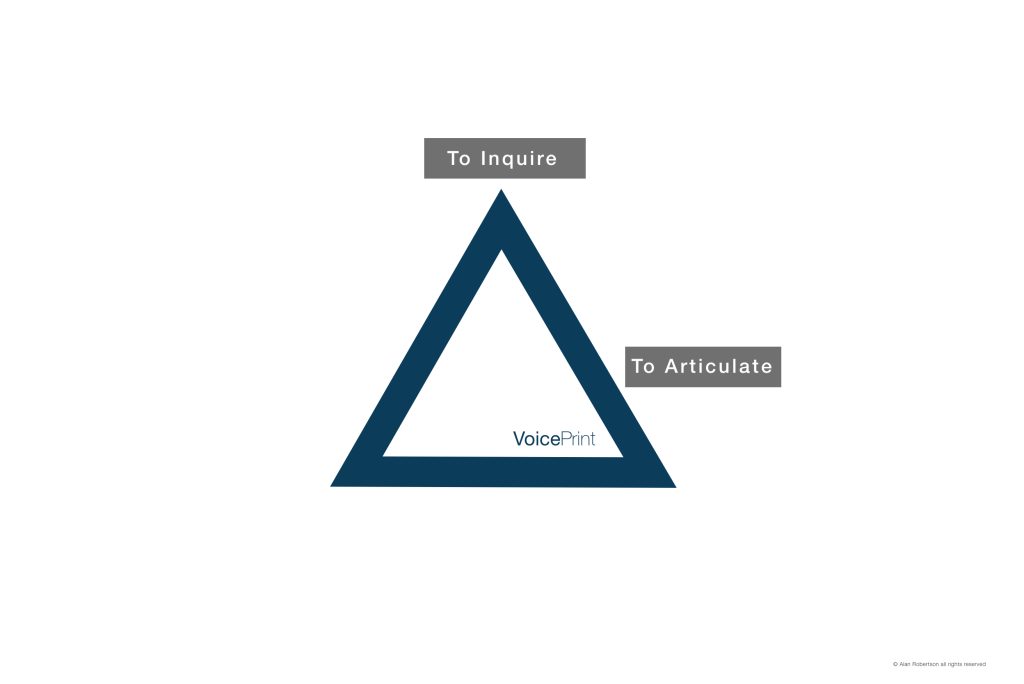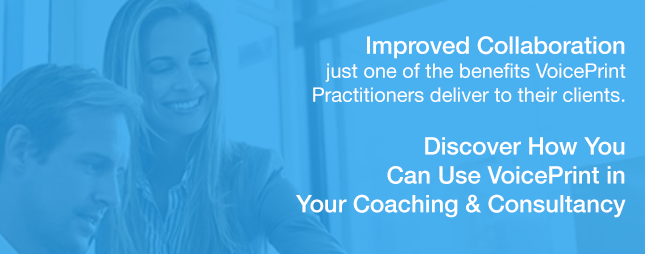
3 patterns of working together to create productive conversations
It can come as a shock to discover that others find you less co-operative than you think you are. One reason for this mismatch of understandings is that people can approach collaboration in radically different ways. The purpose of this paper is to call attention to three of those ways, so that the collaborative intent implicit in these approaches can be recognised and utilised rather than being misconstrued or lost.
The three patterns presented here are all active forms of collaboration. Passive forms, such as taking care to preserve a relationship[1] or exhibiting a willingness to compromise[2], are not unimportant, but are of less immediate interest and use, precisely because their success is even more dependent on the reactions of others. The focus here is on what you can initiate yourself: how to speak, what to listen for and how to cultivate particular, productive patterns of dialogue.
These three patterns have all been observed in the course of working with individuals and their VoicePrints. What follows is a short description of each pattern, its merits and demerits, and the circumstances in which it is likely to be effective.
Pattern 1 Collaboration – Open-minded map-making
The most self-evidently collaborative form of conversing with others relies on using the voices of Inquiry and Articulation. [3]

Inquire serves to open up the discussion, to discover others’ thoughts, needs and concerns and to ensure that the other feels involved, heard and respected. To Articulate, summarising in a clear, matter-of-fact way, not only helps to demonstrate that you have accurately heard and understood what the other person has said, but also, as the collaborative process unfolds through further cycles of inquiry and articulation, to verbalise and progressively refine the shared understanding that is emerging from the discussion.
For this pattern to work, both (or all) parties need to be ready to use and to go along with Inquiry. This means listening, as well as asking, without letting preconceptions get in the way. Skilful use of the Inquire voice is the key to this pattern. The Articulate voice then turns the response – which may unfortunately have been delivered in a manner that doesn’t sound very collaborative – into the more neutral form of a piece of explanation that is jointly available. It offers the conversation a platform on which to build. This combination of Inquire and Articulate is a particularly useful way of providing conversational leadership in a form which fosters co-operation, because it simultaneously clarifies, calms and creates a more reliable map of the situation.
This approach to collaboration takes time, because inquiry will not automatically yield prompt or full disclosure of others’ thoughts, needs and concerns. People take time to decide whether they trust the inquirer. They also take time to formulate, clarify and express their own thinking, needs and concerns for themselves. But a pattern of iteratively inquiring and articulating can be a productive investment of time. It sets an example of continuing open-mindedness and objectivity, and creates a collaborative dynamic for the conversation.
Open-minded Map-making is especially important for dealing with ‘minefields,’ complex problems (and opportunities) where people’s feelings are strongly involved, where their need to feel heard, understood and respected is acute, and where their emotional buy-in is essential to delivering an enduring outcome. It is an approach which needs patience as well as skill and sensitivity to hold the conversation in this pattern long enough to unpack the complexity of the issues, nurture good listening, unlock established positions, generate sufficient trust and create the ‘presence of minds’ required for the noticing and sharing of possibilities to emerge.
It is not, however, the only form of collaboration.
Pattern 2 Collaboration – Expert Consultation
Another form of collaboration is expressed through the use of two quite different voices: Probe and Advise.

This pattern appears to be commonly used by those who see themselves as experts, or as having a particular depth of domain knowledge or experience to offer.[4] Their approach to working with others is akin to giving an expert consultation. The Probe voice is used as a focusing device, to delve into the presenting issue, to get below the surface and uncover how it resembles or differs from what might be expected. The Advise voice is either used to suggest what should then be done or to provide an initial position or interpretation about what needs to be probed.
This is a pattern which values know-how and proficiency, and it can be an efficient approach in practice, especially when dealing with issues which are relatively routine, familiar and straightforward, at least to the person doing the probing and advising. However, Expert Consultation is a riskier pattern than Open-minded Map-making for two reasons. First, it is by definition more ‘narrowly-minded.’ Using an existing frame of reference, whether obtained through formal education and training or acquired informally through experience, serves to constrain our thinking.[5] When the expert ‘reads’ the problem correctly, this framing provides a useful shortcut. But when the issue is more ambiguous, dynamic or emergent than the expert’s reading, then the frame becomes a ‘blind alley.’
The second risk with this pattern is that it feels less co-operative. People on the receiving end can feel ‘processed’ or patronised. Their commitment to act on the advice can then be compromised by their sense that their issue or concern has not been properly heard or considered. This shortcoming can be compounded if, as often happens, the ‘expert’ directs too much of their probing and advising inwards in the form of an unspoken internal dialogue in which they scrutinise the problem in the light of their own know-how.
The Expert Consultation pattern works well therefore, when its user has not only extensive expertise but also an awareness of its limits, a well-earned reputation for skill and sensitivity in the way this expertise is dispensed, and a recognition of when the nature of the problem calls for another approach, either one which is more open-minded or one which is more radical.
Which brings us to our third pattern.
Pattern 3 Collaboration – Close Encounters (of the Third Kind)
With a nod to all you Spielberg movie buffs, I’ve called the third kind of collaboration, the Close Encounter. This may seem at first to be a strange, even alien, sort of collaboration, but if you set it beside our two previous patterns, you can immediately see that it represents a parallel form.

The user of this third approach also employs two voices, in this case Challenge and Evaluate.[6] Challenge serves to interrupt the flow of events, most commonly the course of the discussion. Its purpose is to re-focus. Of course, in itself the Challenge voice can be used for more purely self-centred reasons, for instance as a prelude to Advocacy, to ‘seize control of broadcasting centre’, as it were. But as part of the Challenge & Evaluate pattern its intention seems to be more to do with maintaining the quality and focus of the discussion itself.
Coupling Challenge and Evaluate provides an approach to problem-solving – the endeavour around which co-operation is most commonly sought – which is sharp, to the point and essentially tough-minded. It works off the tacit assumption that all of those involved in the conversation have a shared purpose, a common concern for the issue under discussion and a shared commitment to tackling it. Given that assumption, social niceties – and more exploratory voices such as Inquire – can seem unnecessary. If there is a shared expectation and acceptance that discussions should be focused and tough-minded, then the conditions exist to allow that assumption to work.
But, as always, assumptions are dangerous creatures. The Close Encounter approach, relying as it does on ‘socially-risky’ voices, can easily be heard as attack and personal criticism, especially by those whose temperaments or roles make them particularly sensitive to those voices. So, like all attempts to work collaboratively, it requires the chosen voices to be used with skill and sensitivity. Having said that, there is certainly a place for Close Encounters at work, just as there is a role for viva voce examination and doctoral thesis defence in the world of higher education. Close Encounters function well as a form of collaboration, where the constructive role of the Challenge voice is understood, valued and expected, as is the systematic and de-personalised weighing up of the Evaluate voice. The effect is to enable close focus on issues, balanced judgements, careful decision-making and explicit conclusions.
Conclusion
Organisations depend on co-operation and leaders therefore need to be adept at developing collaborative practices in their organisations. Creating consciously collaborative conversations requires the skilful and mindful use of different combinations of voices in different circumstances. It starts, however, with recognising and helping others to recognise the co-operative intent behind what appear at first to be very different patterns of behaviour.

Pattern 1 Collaboration is the most open. It is overtly collaborative and implicitly egalitarian. It deliberately takes time to build a pattern of relating and conversing in order to open up issues where the parties concerned might be expected to have very different starting points but an equal right to be heard. Pattern 2 Collaboration is narrower. It is implicitly collaborative and tacitly, if not explicitly hierarchical. It assumes that one party has more, or a different quality, of contribution to make to the interaction than the other. Pattern 3 Collaboration is the narrowest. It is a relatively ‘closed’ as well as a ‘close’ encounter, because it presupposes – or insists on – a shared focus on a given issue.
Creators of productive conversations develop the tendencies, skills and awareness to enable themselves and others to have all three of these patterns at their disposal. They not only recognise, but are also able to build, the conversational contexts necessary for each of these three patterns of collaboration to work.
Alan Robertson
Alan Robertson is a business psychologist, Director of TalkWise Ltd, developer of VoicePrint and formerly a senior visiting teaching fellow both at Cranfield University and at the Cass Business School, London
Notes & References
- The Accommodating style in the celebrated Thomas-Kilmann model of conflict-handling styles is an essentially passive rather than active form of collaboration, and its usefulness is constrained accordingly. For more details on this style see Thomas-Kilmann Conflict Mode Instrument, CPP Inc, 2007
- This is the Compromising style in the Thomas-Kilmann, ibid. Again it is more passive than the three forms of collaboration that are described here.
- This pattern of Inquiry and Articulation is corroborated by the statistically significant correlations between these two voices and Thomas & Kilmann’s Collaborating style. See Correlations between VoicePrint and other established psychometric instruments: VoicePrint Research Study B, Business Cognition Ltd, 2013
- The Advise-Probe combination has emerged as a recurring pattern in the VoicePrint self-perception profiles of professional and technical practitioners in various disciplines, including engineering, human resource management and clinical healthcare.
- See the repeated cautions against ‘premature cognitive commitment’ in the works of thinking guru Edward de Bono, for instance The Mechanism of Mind, Penguin Books, 1990. Similarly the downside of ‘default thinking’ as described by Harvard’s David Perkins in Outsmarting IQ: the emerging science of learnable intelligence, Free Press, 1995
- This pattern was first highlighted in observational research conducted by Kevin Eyre.
Ready for a conversation?



